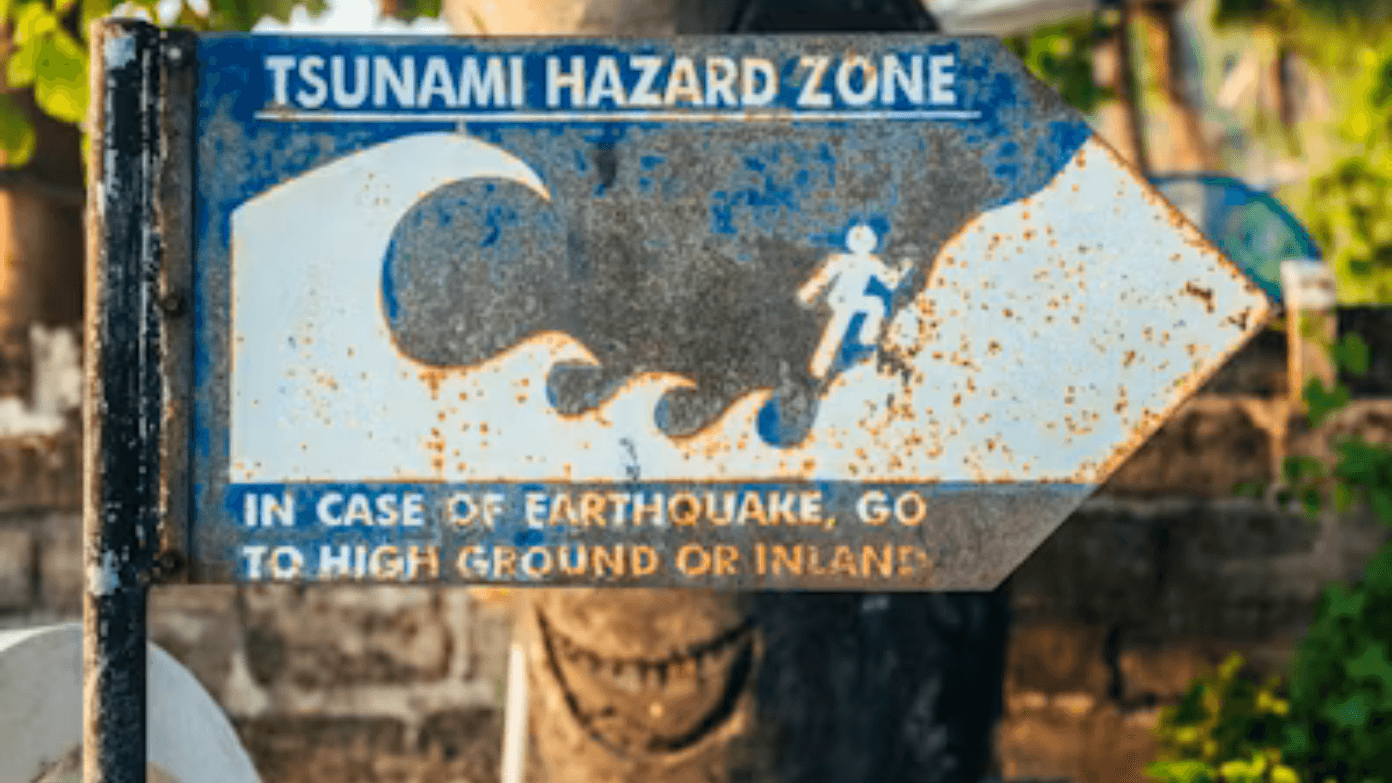Tsunamis, though rare, can threaten, violently the coastal communities of the Pacific. The tsunami that hit the Gulf Coast this week, left some infrastructural damage behind, as detailed here, What damage has been caused by the tsunami that hit Hawaii and California. The Gulf and Atlantic states, such as Florida and Texas, have almost no tsunami history; for five states, however, looking at historical runups, earthquake potential, and recorded fatalities, the probability of being affected by a tsunami is highest: Alaska, Hawaii, Washington, Oregon, and California.
1. Alaska
This extensive coastline along the Aleutian subduction makes Alaska the most tsunami-prone state in the U.S. Its “very high” tsunami hazard ranking reflects both the frequency of events and runup amplitudes. Alaska has recorded more than 100 tsunami events since 1900, including the catastrophic 1964 Good Friday earthquake and resulting tsunami, which caused the majority of Alaska’s 222 tsunami-related deaths. A highly complex pattern of fjords and bays amplifies wave heights, putting coastal villages and ports at acute risk.
2. Hawaii
Hawaii is encircled by the Pacific “Ring of Fire,” making it especially susceptible to local and distant tsunamis. Its hazard ranking has also been described as “very high,” like Alaska’s. Historical records show over 130 events for tsunamis that have impacted the islands and resulted in 326 deaths and significant destruction, especially after the 1946 Aleutian tsunami and the Chilean tsunami of 1960. Hawaii’s low-lying coastal communities and popular tourist beaches are especially vulnerable, without natural height to buffer incoming waves.
3. Washington
Cascadia subduction zone off Washington’s coast will create megathrust earthquakes (magnitude 9+) and usher in accompanying tsunamis. Washington’s hazard is rated as “high” for runups, frequency, and local earthquake sources. Geological evidence confirms at least one great tsunami in 1700, and modern scenarios estimate a 15 percent chance of an 8.0+ event in the next 50 years. Recorded tsunamis in Washington have been rather insignificant compared with those in Alaska and Hawaii, yet potential for multi-meter waves combined with a very short evacuation time makes coastal cities like Aberdeen and Long Beach very vulnerable.
4. Oregon
Oregon, much like Washington, stands under the threats posed by the Cascadia zone. The state’s “high” tsunami hazard ranking has both historical runups and subduction zone earthquake potential to account for it. Research suggests that nearly 100,000 people may be affected along Oregon’s coast by a megathrust tsunami, most of whom would have enough time to reach higher ground given adequate warning and preparedness within 15-25 minutes. Yet innovative solutions, such as evacuation towers, may be necessary for towns located in southern Oregon, where they are the furthest distance to high ground.
5. California
Today, northern California is at the southern end of the Cascadia zone and has experienced tsunami runups from both local and more distant sources. California also gets rated ‘high’ on the hazard scale. Even though the southern areas, as a whole, are at comparatively lower risk, it is evident that some parts, like Crescent City and Eureka, have recorded several damaging waves, particularly from the much-studied 1964 Alaska and 2011 Japan tsunamis. Coastal infrastructure, including harbors, fishing ports, and beach front properties, remains vulnerable while the rapid travel speeds of waves leave little room for late-to-evacuate persons.
Pacific coastal states must be serious about preparing for tsunamis while Florida and Texas can sleep soundly without fear of such disasters. Among the most critical are rigorous evacuation planning, public-awareness campaigns on natural tsunami warnings (e.g., strong ground shaking), and infrastructure resilience-such as safe-haven towers in low-elevation communities. Readers might also be interested to know, When was the last time a tsunami hit the United States, what coasts and cities did it affect, and how many people died?
Strengthening community resilience against one of nature’s fiercest adversities can be accomplished through understanding local hazards and historical precedents.
Read more: How can I email Elon Musk directly and where can I contact Tesla?

